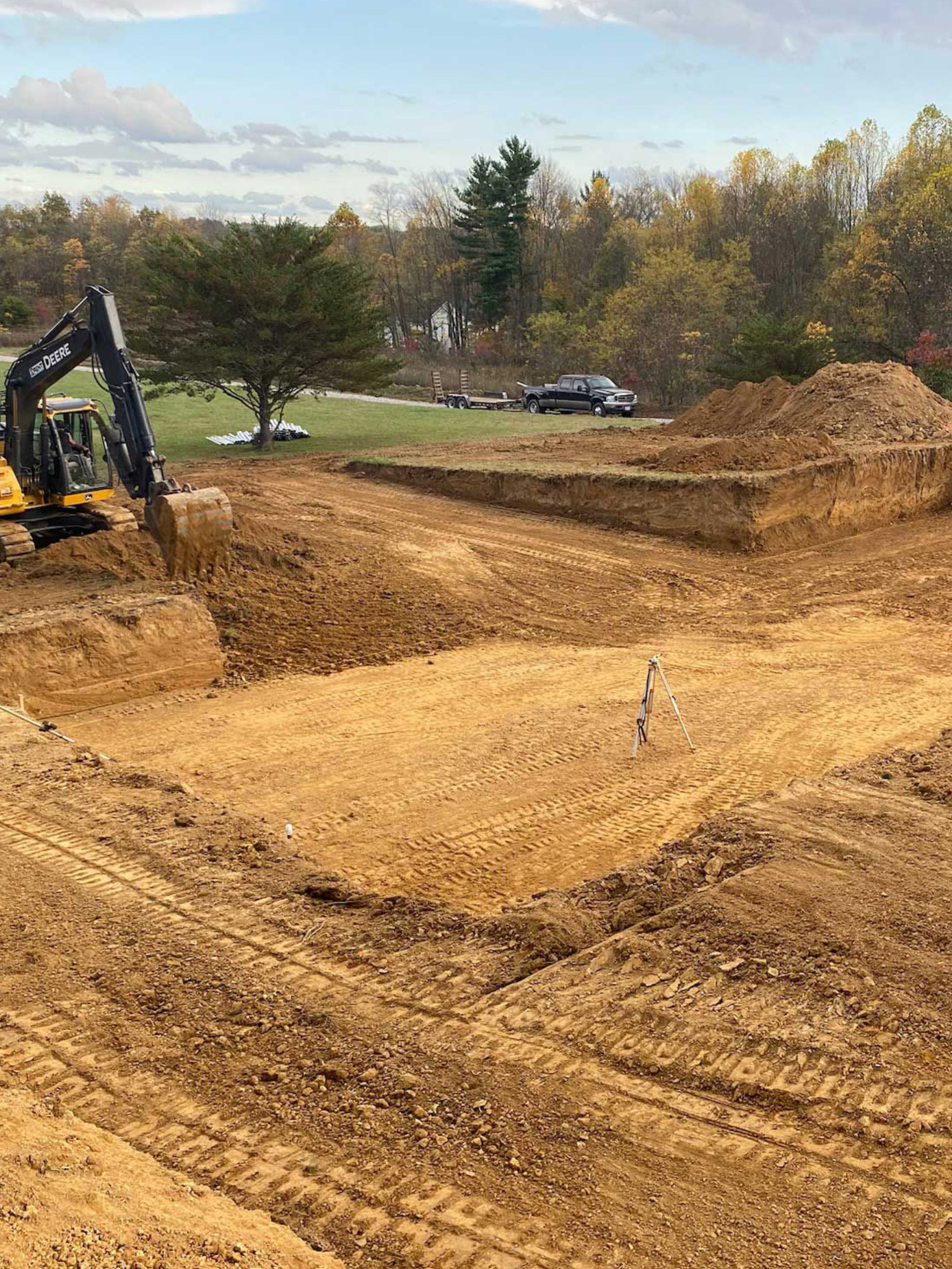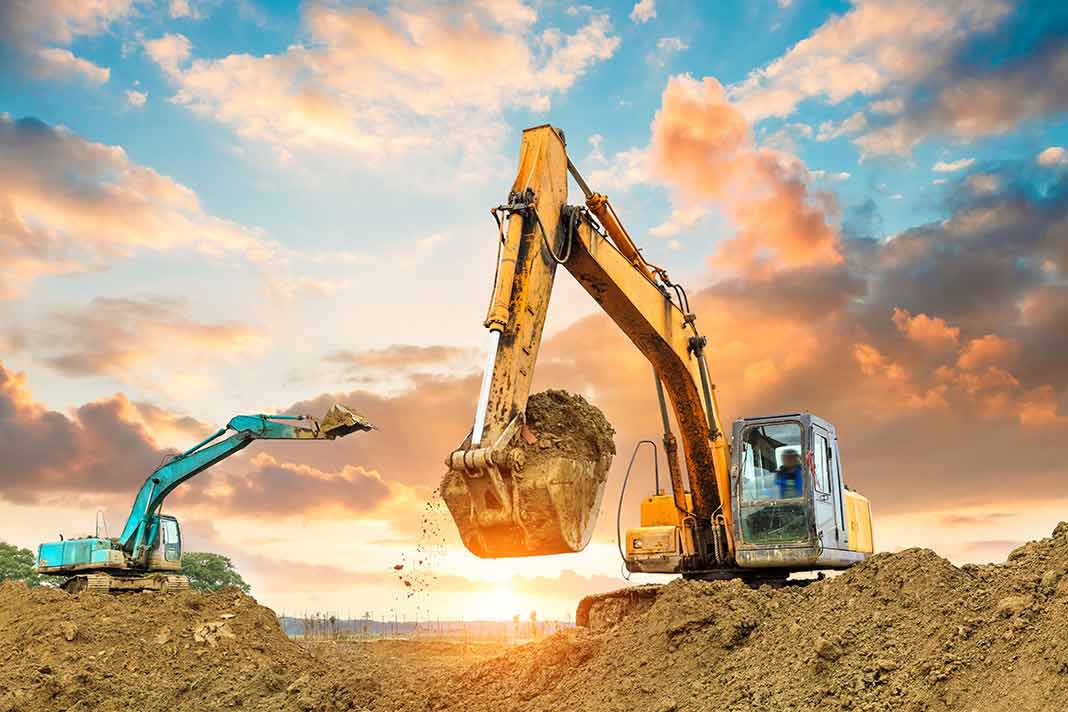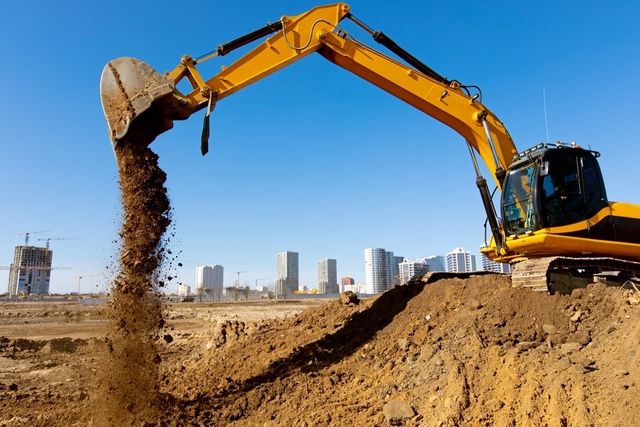Lancaster Excavation - Expert Excavation Services in Lancaster, OH
Wiki Article
Thorough Expedition: The Scientific Research Behind Superior Excavation Practices
From old hand devices to modern-day hydraulic excavators, the advancement of excavation methods has been a testament to human ingenuity and technical improvements. What genuinely establishes remarkable excavation practices apart is a deep understanding of geological concepts, combined with the application of innovative tools and techniques.Advancement of Excavation Techniques
Throughout history, the evolution of excavation strategies has played an essential function ahead of time building and construction methods and archaeological discoveries. From the primary devices used by our forefathers to the advanced equipment utilized in modern times, the progression of excavation methods has actually significantly transformed exactly how we approach numerous tasks.In old times, manual work with standard devices such as pickaxes, wheelbarrows, and shovels was the key approach of excavation. This labor-intensive process restricted the depth and range of excavations, typically causing slow development and limited accessibility to specific websites. As human beings advanced, so did the methods and devices made use of for excavation.
The Industrial Revolution marked a transforming point in excavation techniques with the introduction of steam-powered equipment. This technology transformed the field, enabling for faster and much more substantial excavations. In modern times, technology plays an essential function in excavation, with improvements like general practitioner systems, drones, and 3D scanning improving accuracy and performance in the area. The evolution of excavation strategies remains to form the means we build, explore, and comprehend the world around us.
Duty of Modern Technology in Excavation

The combination of cutting-edge technology has actually basically transformed the field of excavation, enhancing precision and performance to extraordinary degrees - lancaster trenching. One of the crucial technological advancements that has actually significantly affected excavation methods is the usage of General practitioner systems.
In addition, the advent of 3D modeling and simulation software application has streamlined the planning procedure for excavation projects. Engineers and operators can currently visualize the entire excavation procedure before beginning, maximizing and identifying prospective obstacles workflow. Along with this, the execution of drones in excavation tasks has helped with airborne studies, volumetric dimensions, and website assessments with unequaled rate and precision.
Geological Principles in Excavation
An understanding of geological principles is essential for guaranteeing the architectural integrity and security of excavation websites. Geological variables play a vital function in establishing the usefulness and safety of excavation tasks (lancaster trenching). One vital geological principle to consider is the kind of dirt or rock existing at the site. Different soil kinds, such as sand, crushed rock, or clay, have varying levels of stability and require different excavation techniques. As an example, cohesive soils like clay might call for extra assistance to stop collapses, while sandy soils might be susceptible to disintegration throughout excavation.In addition, the geological framework of the area, including mistakes, fractures, and rock developments, should be carefully assessed to determine prospective threats and obstacles. Digging deep into near geological fault or unpredictable rock formations can result in instability and prospective dangers. By conducting detailed geological studies and evaluation, engineers and excavators can establish strategies to reduce threats and guarantee the successful completion of excavation jobs. Eventually, incorporating geological concepts into excavation methods is essential for achieving secure, effective, and lasting outcomes.

Latest Devices for Excavation
In the realm of excavation methods, contemporary technologies in tools have actually transformed the efficiency and accuracy of excavation procedures. Among the most up to date tools making waves in the industry is making use of drones geared up with advanced imaging innovation. These drones can give thorough airborne surveys of excavation websites, supplying real-time information on topography and prospective threats. This details aids in much better planning and decision-making throughout the excavation process.Another cutting-edge tool gaining appeal is the implementation of 3D printing modern technology for producing customized excavation tools. This permits the manufacturing of specialized tools that are customized to the certain demands of a project, boosting performance and decreasing downtime.
Furthermore, innovations in materials science have actually brought about the advancement of stronger and more long lasting excavation devices. septic ohio. Tungsten carbide-tipped excavator add-ons, for instance, deal exceptional efficiency in challenging ground problems, improving productivity on-site
Scientific research's Effect on Excavation Practices

Additionally, advancements in materials science have actually caused the production of stronger, a lot more sturdy excavation tools and equipment. For example, making use of composite materials in diggers and shovels has actually enhanced their efficiency and longevity, eventually raising productivity on excavation sites. In addition, clinical research on soil mechanics and geotechnical engineering has actually given beneficial insights right into soil behavior, allowing excavation specialists to make informed choices relating to excavation techniques and soil stabilization methods. Overall, science continues to drive innovation and renovation in excavation techniques, making excavation jobs extra effective, economical, and lasting.

Conclusion
In verdict, the development of excavation techniques has actually been significantly affected by innovations in technology and a deeper understanding of geological principles. The current devices and devices utilized in excavation have actually improved efficiency and precision in the area. The application of clinical expertise has actually significantly enhanced excavation methods, bring about a lot more sustainable and efficient techniques for excavating various types of materials.In the world of excavation practices, modern developments in tools have actually transformed the performance and precision of excavation procedures. By leveraging scientific principles, the excavation industry has actually been able to dramatically improve efficiency, accuracy, and safety in excavation processes. GPR allows excavation groups to non-invasively check and map subsurface frameworks, utilities, and prospective hazards, enabling them to prepare excavation jobs with greater precision and decreased threat of accidents.
Furthermore, scientific research on soil auto mechanics and geotechnical engineering has given important insights right into soil behavior, permitting excavation specialists to make enlightened decisions relating to excavation approaches and soil stablizing strategies. In general, scientific research proceeds to drive innovation and enhancement in excavation techniques, making excavation jobs extra efficient, cost-effective, and lasting.
Report this wiki page